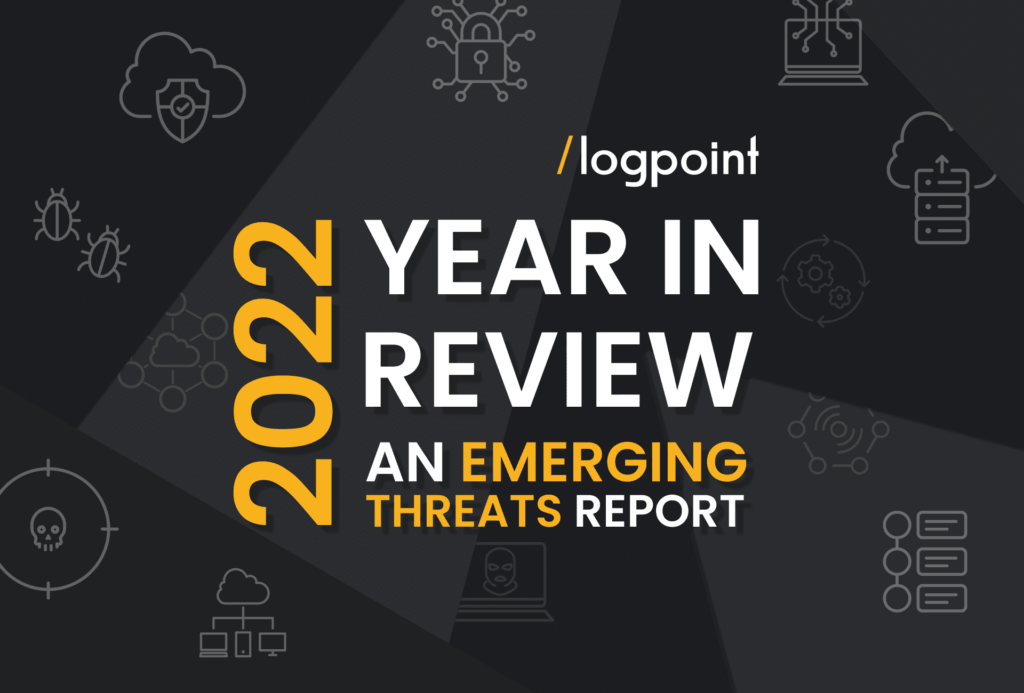We’ve all heard the phrase “new year, new me,” but in the world of cybersecurity, the new year can only mean one thing — New threats, vectors, and actors.
As we head into 2023, cybercriminals will be doing everything they can to skirt your security efforts. Their methods and technologies are constantly evolving and becoming more sophisticated.
The best way to combat these new threats is to know what to look out for. We’re going to look at some of the area’s cybersecurity experts are predicting will cause issues for businesses in 2023.
3 threats, vectors, and actors to watch for in 2023
There are 3 key issues we’re potentially facing going into 2023. These are very real threats businesses are facing which involve new vectors and actors, making your cybersecurity efforts more important than ever.
Smart devices are an attractive proposition for bad actors
We can’t begin to explain how helpful the Internet of Things (IoT) and smart devices are. They’re improving business processes and even our everyday lives in many ways. It’s predicted that we will have over 41 billion IoT devices installed worldwide by 2025, just two years away!
Our lives have been transformed for the better, but every smart device offers cybercriminals a potential vulnerability to exploit. Wearable tech, smart home set-ups, smartphones, even your car can be targeted.
Last year there was an incredibly concerning series of tweets from a cybersecurity expert stating he was able to gain full access to a number of Tesla vehicles. The vulnerability he found allowed him to gain full remote control of those vehicles, which were located in 13 different counties. This also allowed him to identify the exact location of these vehicles and even if there was anyone in the car at any one time. This vulnerability was quickly addressed by Tesla, but they had to completely reset authentication tokens for every vehicle in operation to fix it.
We have also seen plenty of examples of smart fridges being hacked, mostly for fun, but some smart fridge hacks have exposed personal information, including Gmail login credentials.
Social media provides all-new vector opportunities
Social media is a playground for cybercriminals. People are willingly giving their personal information to these sites, from basic identity information to exact locations. This has naturally been an exciting prospect for criminals, as email scams shift to social media posts.
Social media and social engineering go hand in hand. Social engineering is the act of tricking someone into giving out sensitive information, commonly referred to as phishing.
Phishing is incredibly easy to achieve on social media. You can create fun surveys or applications that look as if they’re part of the social media site. This gives users the impression that they’re still using the platform, leading them to input their login credentials or personal information into the fraudulent site.
There’s also a false sense of security with social media. Scammers are now able to create a profile that looks legitimate and collect information about you, your partner, or your family. All of this information can be used to pull off identity fraud. Unfortunately, many victims believe that because they’re interacting with a legitimate-looking profile or social media page, they’re safe. This is obviously not the case, and in 2023 we should be looking at our social media privacy settings to help stop your profiles from contributing to identity theft.
Crime as a Service: Bad actors now available for hire
You’ve heard of Software as a Service (SaaS) maybe you have heard of Ransomware as a Service (RaaS), but what about Crime as a Service?
There’s a seedy corner of the internet that offers its services to whoever can pay. With the growing popularity of untraceable cryptocurrency, this is a market that is absolutely booming. Blockchain analysis firm Chainalysis recently reported that cybercriminals have stolen more than $3bn in crypto-based cyber attacks between January and October of 2022.
This is incredibly concerning for businesses. These cybercriminals are highly sophisticated and present a real danger beyond phishing scams. Even Meta has been hit by “bad actors,” with an employee being fired after using their employee privileges to take over and give unauthorized access to Facebook and Instagram profiles. It’s said that the employee was paid upwards of $1000 in cryptocurrency for their services.
The downfall of Hive Ransomware
2023 got off to a flying start with the news of Hive ransomware. An international operation led by the FBI and German law enforcement with support from the National Crime Agency (NCA) has taken down the HIVE strand of ransomware service used by cyber criminals to attack and extort businesses worldwide. The servers of the HIVE ransomware were taken offline, and anyone trying to access the HIVE infrastructure will now be met with a law enforcement splash page explaining that the network has been seized and is no longer available for use.
HIVE was available for purchase on the dark web and allowed criminals to launch ransomware attacks by sending it as an attachment to a phishing email, infecting the victim’s computer and encrypting their system until a ransom payment was made. The group has targeted over 1,300 victims worldwide since June 2021 and received over $100 million in ransom payments. The FBI developed the capability to circumvent HIVE encryption, and the NCA supported a number of victims in the UK to remove the impact of the ransomware.
The operation was a collaboration between multiple international law enforcement partners, including the US Secret Service, Canada, France, Germany, Ireland, Lithuania, Norway, Portugal, Romania, Spain, Sweden, and the UK. The NCA’s National Cyber Crime Unit continues to work closely with partners to tackle the national security threat of cybercrime and urges businesses to come forward and report any incidents to law enforcement.
How Logpoint can help against new threats, vectors and actors
It feels like there’s a new issue every single day, and it’s difficult to keep up with new developments. SaaS cybersecurity solutions from Logpoint are constantly updated without manual interaction.
At Logpoint our Security Research Team produces Emerging Threats reports these reports contain vital information on detection, management and response including SOAR playbooks to help automate your response. You can stay up to date with new threats, vectors, and actors as they emerge.
Make sure you’re prepared for everything 2023 has in store, check out the 2023 predictions from our CTO Christian Have. Contact us today to find out more!








